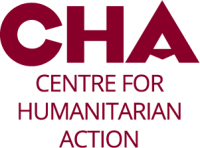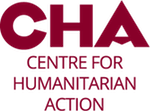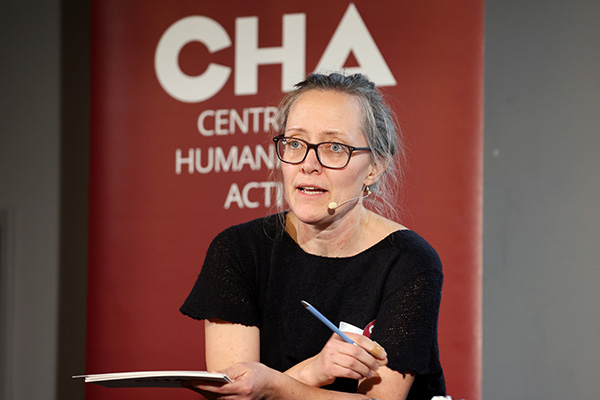| Autor*in: | Andrea Düchting |
| Datum: | 20. Dezember 2022 |
The challenges for the humanitarian sector’s digital transformation process are huge and often perceived as overwhelmingly complex. For many years, the discussion has been dominated by technology savvy optimtists who drove innovation and digitalisation. The debate has recently become much more diverse, discussing the impact of digital transformation from various perspectives, analysing digital threats and abstract risks by hinting at potential solutions and opportunities for the sector’s long needed system change. Based on the narrative that technology cannot solve the many problems of the humanitarian sector, experts agree that technology rather mirrors or accelerates the sector’s longstanding issues around power imbalances and lack of accountability. To find answers, the humanitarian community needs to ask uncomfortable questions, raise concerns, listen to one another and initiate a dialogue with other stakeholders who are part of the digital humanitarian ecosystem (e.g. private sector, media, academia, etc.). Too much is at stake if the humanitarian actors decide to shy away, take no active stance and leave the decision-making to technology companies.
The ICRC, one of the sector’s leading organisations on data protection and privacy, has recognised these complex challenges and thus invited diverse stakeholders representing the humanitarian sector’s digital ecosystem to a one day Symposium on Cybersecurity and Data Protection in Humanitarian Action in November 2022 in Luxembourg. The group of experts represented the humanitarian, private and public sectors, academia, civil society, and others.
One of the main concerns that humanitarian practitioners highlighted during the Symposium included the protection of people affected by crisis. Doing no digital harm has become one of the core values which should help humanitarian organisations to protect affected people and build trust, particularly during times of crisis and armed conflict. Participants seemed to agree that trust is key when engaging affected people and interacting with diverse local actors varying from local partners, governments and parties of conflict. But what is trust actually about? According to Giddens (1990) “trust is about developing a sense of emotional comfort in situations which we cannot control or monitor”. One way to build it is through information and knowledge sharing, communication, dialogue, accountability and the responsible use of data. In the humanitarian sector’s digital environment, this means informing affected people about the use of technology and capacitating them to influence data processing practices.
The reality has, however, proven that most stakeholders lack the maturity to properly engage affected people at different levels, from information sharing to active decision-making. Humanitarian organisations rather argue that people do not seem to have an issue with sharing their data. Even if affected people do prioritise humanitarian services or have no alternative to accecpt life saving support over their personal data and their digital footprint, this preference should not be a blanket excuse to collect and process people’s data without introducing accountability measures. Strengthening accountability is not only an ethical question but a responsibility in order to protect and doing no digital harm. While participatants of the Symposium clearly recognised a shared responsibility of the humanitarian and private sectors, it was more difficult to agree on respective roles and actions to introduce accountability measures.
For the humanitarian sector, the lack of operationalisation is partly resulting from different levels of digital transformation, not to forget its diverging levels of digital literacy of different staff groups. For some organisations, the COVID-19 pandemic functioned as a wake-up call to go digital; for others, the ongoing humanitarian crisis in Ukraine might appear as a gamechanger. New, innovative tools are developed in isolation and piloted during times of crisis, when funding is available. To ensure the tools are compliant with legal frameworks, data protection regulations are widely introduced but hardly operationalised.
No matter how humanitarian organisations shape their digital transformation, they seem to have one thing in common: a focus on internal processes. Local partners and affected people who are an active part of the digital information and communication ecosystem which humanitarian and private sector stakeholders operate in, are usually left out of the discussion and digital and data-related decision-making. As a result, local actors are bypassed, risking to increase the digital divide, and instead assumptions on affected people’s information and communication requirements are used.
Even if humanitarian organisations ask people about their preferred channels of communication, many humanitarian practitioners still argue that in most contexts face-to-face interactions remain the preferred channel. But does this really refer to all population segments? Across the globe, young people are digitally connected and live a physical as well as virtual life. Isn’t it time to start acknowledging that we need to use diverse channels of communication to reach all segments of the affected population, those who prefer to use offline tools and those who prefer to use instant messaging tools, social media and alike? During the Symposium, humanitarian and private sector stakeholders reconfirmed the need for more dialogue, collaboration and exchange to mutually understand people’s communication preferences and perceptions about digital harms.
At the same time, the sector’s attempts at increasing digital accountability are diverse and vary from introducing connectivity services for communities or self-registration, to operating multiple community feedback mechanisms. For compliance purposes, many organisations opt for developing new inhouse solutions which respond to specific purposes and, thus, are hardly shared or opened-up to likeminded humanitarian partners. In contrast, organisations with less resources rely on off-the shelf solutions which are developed for specific purposes and, hence, need to be customised. Most of these solutions are not embedded in a longer-term strategy, including but not limited to data protection and privacy and cybersecurity approaches. In many instances, this might be resulting from (human and financial) resources and short funding cycles.
During the Symposium, knowledge gaps and language barriers between humanitarian, private and public sectors, as well as capacity and capability constraints within and between humanitarian organisations, divergent levels of digital and data literacy amongst national and local partners, and, most importantly, of affected populations, were identified as additional barriers. Participants commonly agreed to a shared responsibility of all sectors to overcome these complex challenges. Again, the discussion about respective roles and actions is yet to be seen.
Some technical solutions are already available and might respond to increasing organisation’s and people’s digital literacy, understanding the humanitarian sector’s data requirements and protection risks, investing in data infrastructure and data governance, managing data responsibly, not to speak about applying data subject rights or similar regulations. However, they remain isolated solutions which try to answer specific questions or scratching the surface without tackling the sector’s structural power dynamics. To focus on the transformative aspect of digitalisation, uncomfortable questions and discussions need to be raised and require a systems thinking and a different way of thinking and collaborating with each other aiming at system-wide changes.
So, in times of funding shortfalls and competing priorities, how do we initiate this mindset shift to foster trust, accountability and collaboration? Increased awareness about digital opportunities, trade-offs and risks might be an entry point alongside ethical principles and common standards. Networks and fora like the ICRC Symposium which allow humanitarian actors to openly discuss digital challenges and risks with technology companies, state representatives, and others are rare but crucial and urgently needed for increased, mutual understanding.
The Symposium might not have answered all questions or offered concrete actions and solutions. Events like the Symposium are a starting point to discuss the humanitarian sector’s inevitable digitalisation with diverse group of stakeholders. The sector’s digitalisation bears huge responsibilities and, at the same time, could be a great opportunity to also look at and transform structural power imbalances, language barriers and capacity constraints.
Humanitarian actors operate in a digital ecosystem which does not stop at national borders but requires a whole sector as well as system approach. As Albert Einstein already pointed out: ‘We cannot solve our problems with the same thinking we used when we created them’. Let us hope for more and similar events to follow the ICRC Symposium. CHA’s data and digitalisation project will definitely continue to support such efforts towards the humanitarian sector’s digital transformation through increased trust and digital literacy.
Andrea Düchting is a fellow at the Centre for Humanitarian Action (CHA). She leads the research project on digitalization and innovation of German humanitarian aid. Her interests include food security, partnerships and localization, Accountability to Affected Populations as well as personal data rights and data protection.




Relevante Beiträge
Online Workshop: Digital Accountability
27.06.2022 09:00 - 12:00CHAtroom #11: Humanitarian Digital Divide
20.10.2022#CHA22 Jahreskonferenz Rückblick
30.11.2022